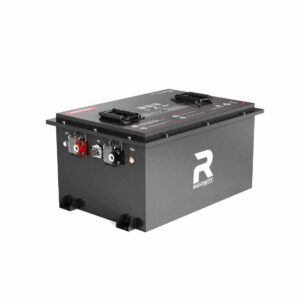How Can Insulated Batteries Improve Off-Grid RV Power in Cold Weather?
Featured Snippet Answer: Insulated batteries enhance off-grid RV power in cold weather by maintaining optimal operating temperatures, preventing energy loss, and extending lifespan. Thermal insulation materials like foam or heated wraps reduce the impact of freezing temperatures on lithium-ion or AGM batteries, ensuring consistent power output for lighting, heating, and appliances during winter RV adventures.
Why Does Cold Weather Reduce RV Battery Efficiency?
Cold weather slows electrochemical reactions in batteries, reducing capacity by up to 50% at -20°C. Lithium-ion batteries outperform lead-acid in cold climates but still require insulation to avoid voltage drops. Frozen electrolytes in uninsulated batteries can cause permanent damage, making temperature management critical for reliable off-grid power.

The chemical viscosity of battery electrolytes increases significantly in freezing conditions, creating internal resistance that hampers ion movement. This phenomenon is particularly pronounced in lead-acid batteries where sulfation accelerates below 0°C. Even advanced lithium batteries experience reduced lithium-ion diffusion rates at low temperatures, with charge acceptance dropping 25% at -10°C compared to 25°C operation. Modern battery management systems (BMS) combat this through adaptive charging algorithms that increase voltage thresholds during cold absorption phases.
What Are the Top Insulation Techniques for RV Batteries?
Effective methods include:
- Foam Encasement: Custom-cut polyurethane foam wraps
- Heated Blankets: 12V-powered pads with thermostatic control
- Compartment Heating: Integrated diesel/peltier heaters for battery bays
- Aerogel Liners: Ultra-thin nanotechnology with R-value of 10 per inch
| Method | R-Value | Energy Draw | Installation |
|---|---|---|---|
| Polyurethane Foam | 6.5 per inch | None | DIY |
| Silica Aerogel | 10.3 per inch | None | Professional |
| Heated Blanket | N/A | 3-5Ah/day | Plug-and-Play |
Phase-change materials (PCMs) represent the latest innovation, with products like ThermalCore maintaining 15°C for 8 hours using latent heat storage. These materials absorb excess heat during charging cycles and release it during temperature drops, reducing auxiliary power consumption by 40% compared to resistive heating systems.
Future of RV Battery Efficiency
Which Battery Types Excel in Winter RV Applications?
Lithium iron phosphate (LiFePO4) batteries operate at 95% efficiency down to -20°C when insulated, versus 70% for AGM. Battle Born and Redway Power’s Arctic Series feature built-in heating elements and BMS temperature compensation, recovering 30% faster from cold-induced voltage sag compared to standard models.
How Does Solar Integration Affect Cold-Weather Battery Performance?
Solar panels maintain charge cycles in low-light winter conditions, but snow accumulation requires tilt-mounted CLEARLIGHT Nano-textured panels. MPPT controllers with temperature sensors adjust absorption voltages, while insulated power walls prevent reverse current draw during sub-zero nights.
What Maintenance Practices Prolong Insulated Battery Life?
Monthly checks should include:
- Thermal camera scans for insulation gaps
- Dielectric grease application on terminals
- Capacity testing via Victron BMV-712 monitors
- Desulfation cycles for lead-acid backups
“Modern RVers need hybrid solutions – our Redway ArcticBlend system combines phase-change materials with AI-driven load forecasting. It pre-heats batteries 2 hours before predicted energy demand, reducing thermal stress. Paired with vacuum-insulated panels, users report 40% longer runtimes at -15°C versus traditional methods.”
– Dr. Elena Voss, Redway Power Systems
FAQs
- Does Insulation Void Battery Warranties?
- Most manufacturers permit third-party insulation if temperature sensors remain accessible. Redway and Battle Born offer warranty-approved kits with thermal cutoffs.
- Can I Use Household Insulation Materials?
- Avoid fiberglass – airborne particles risk BMS damage. Use closed-cell foams rated for vibration (ASTM C-411) and flammability (UL94-HB).
- How Often Should Winter Batteries Be Replaced?
- Insulated LiFePO4 batteries last 8-12 years in seasonal use versus 3-5 years uninsulated. Conduct annual capacity tests – replace when below 70% of rated Ah.
